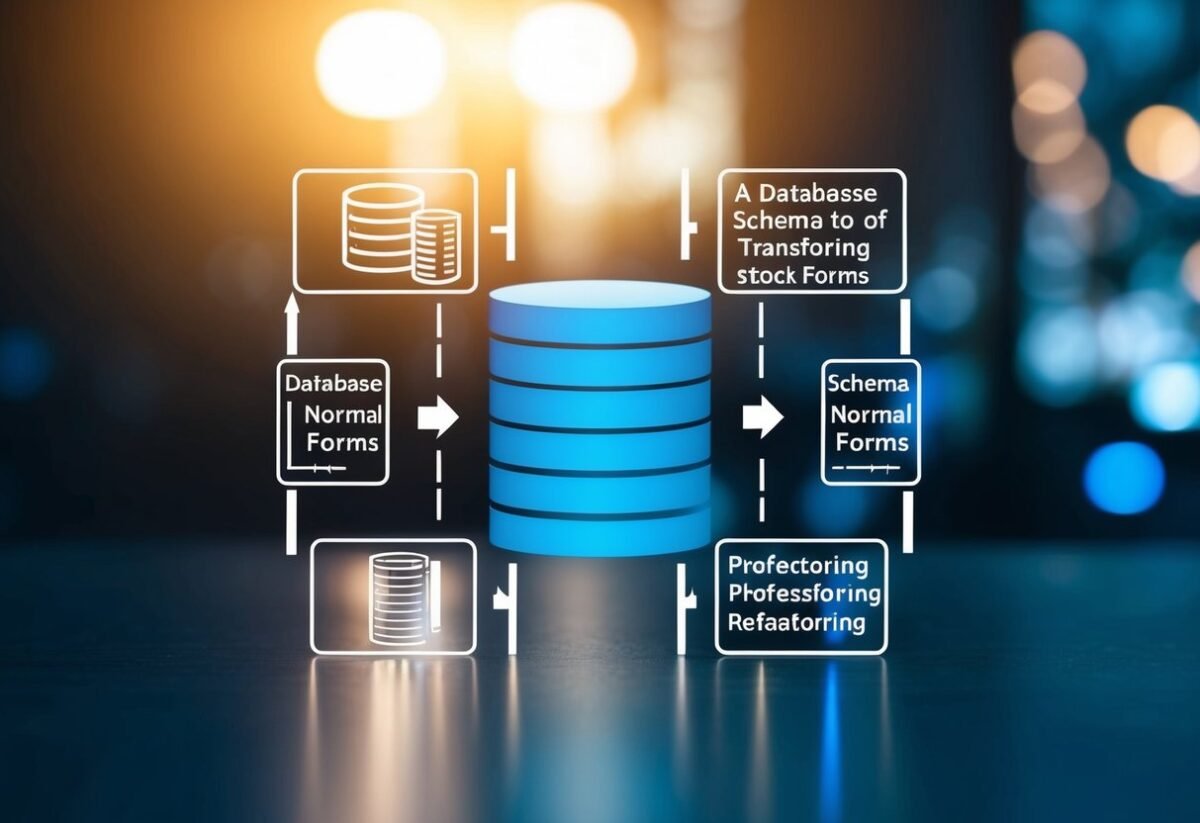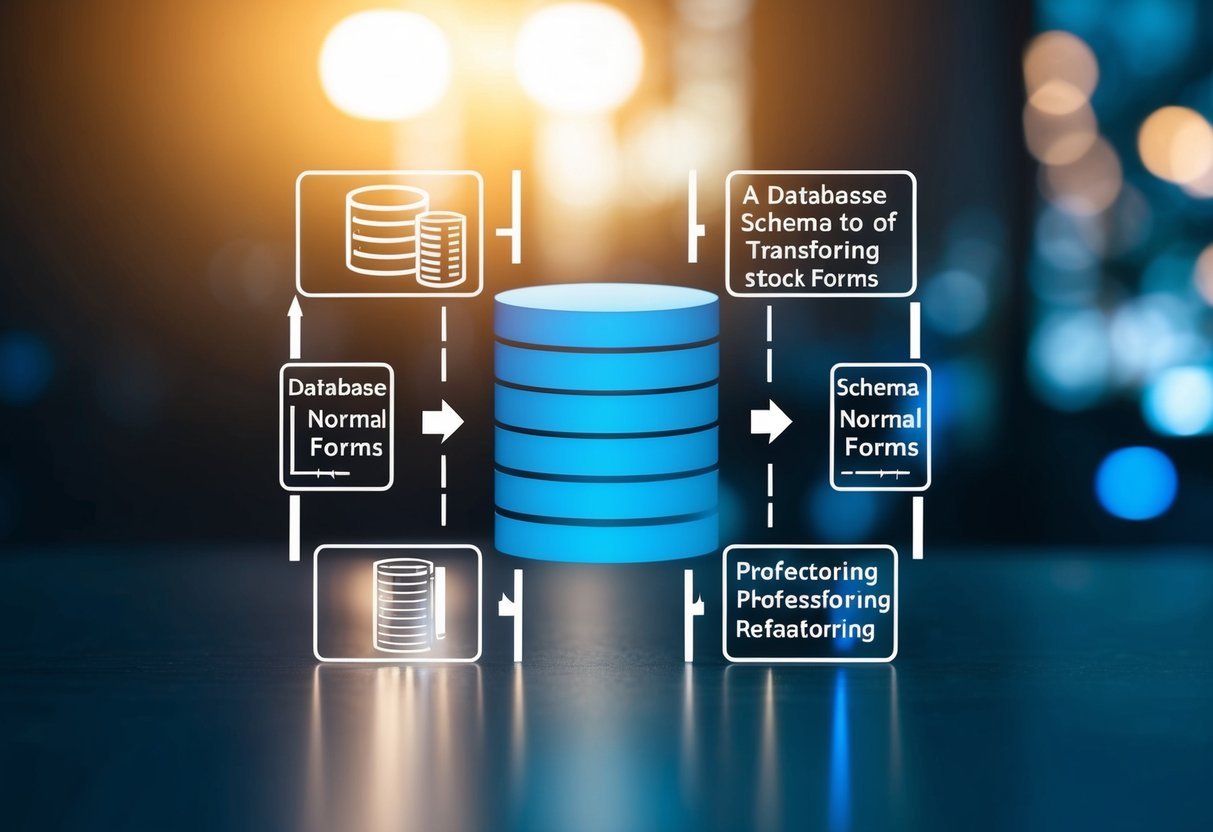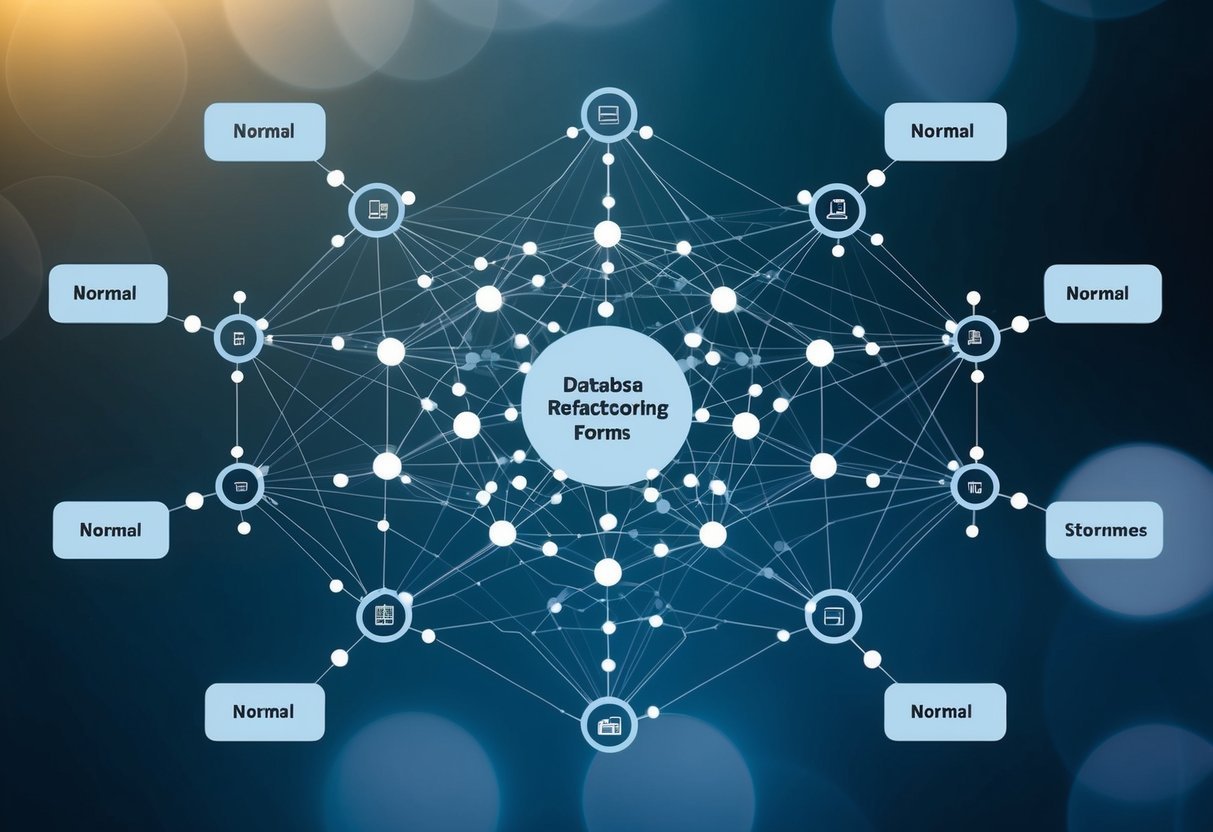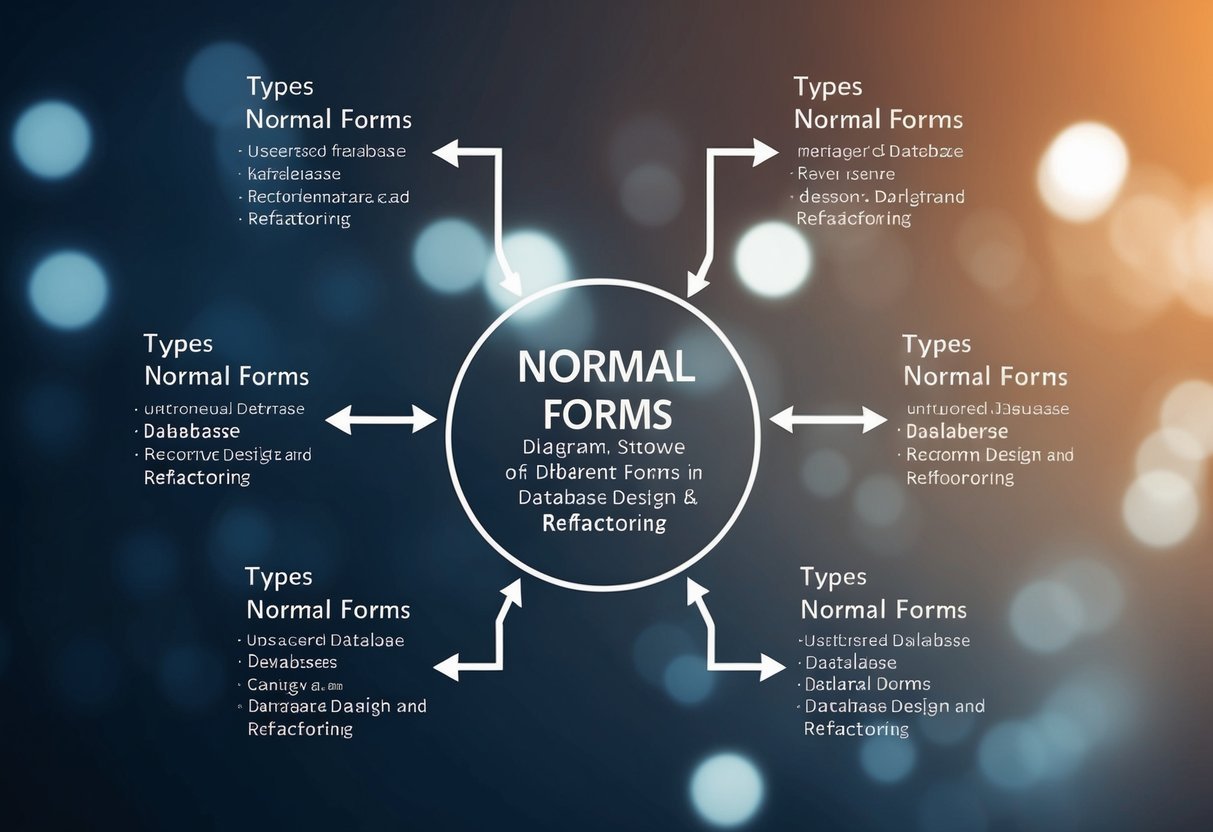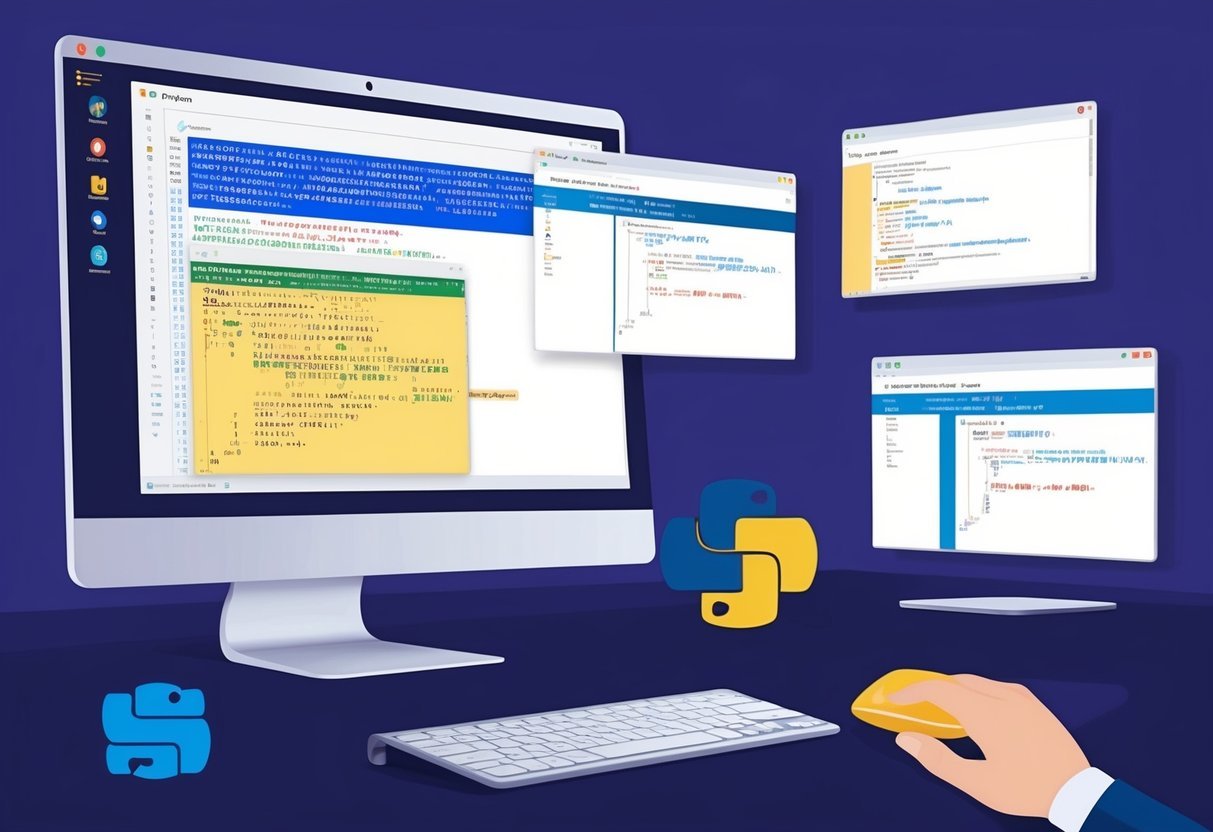Understanding the EXISTS Operator
The SQL EXISTS operator is a key component in advanced query filtering. It checks for the presence of rows returned by a subquery, often used in a WHERE clause.
This feature allows users to filter their search based on whether any records meet specific criteria, enhancing the precision and efficiency of their SQL queries.
Basics of EXISTS
The EXISTS operator is used in the WHERE clause of a SQL query to test for the existence of rows in a subquery. When the subquery returns one or more rows, EXISTS evaluates to true.
Conversely, if no rows are returned, it evaluates to false. This operator is not concerned with the actual data inside the rows, only with whether any such rows exist.
Consider an example where EXISTS helps to check if there are any orders linked to a particular customer ID in a database. If the condition finds matching records, the main query continues processing.
The operator can be applied to multiple tables for comprehensive data validation without specifying detailed content requirements.
Using EXISTS with Subqueries
The power of the EXISTS operator comes from its use with subqueries. In SQL, subqueries act like queries within a query. When paired with EXISTS, subqueries determine whether a specific condition is present in the database.
The basic structure involves using EXISTS in combination with a SELECT clause inside the subquery. For instance, in a sales database, one can use EXISTS to determine if any orders exist for a given supplier ID.
Matching records cause the EXISTS check to pass, instructing the SQL query to continue with those records.
EXISTS is commonly paired with subqueries in FROM clauses to streamline complex queries, ensuring efficient data retrieval based on conditions supplied by the subquery logic.
Performance Considerations for EXISTS
Using EXISTS can impact query performance positively, especially with large datasets. Unlike alternatives that might require fetching and processing all records, EXISTS stops checking as soon as it finds a matching row.
This makes it more efficient in certain contexts.
The key to optimizing performance lies in crafting subqueries that return the necessary results with minimum overhead. Indexes on columns used in the subquery’s WHERE clause can enhance speed, as they allow quicker data retrieval for the EXISTS checks. Understanding these aspects helps users leverage the full benefits of the EXISTS operator.
Leveraging NOT EXISTS for Exclusion
Using the NOT EXISTS operator in SQL is a powerful method to filter out unwanted rows. It is especially helpful when you need to check if a subquery produces no results and exclude those that do.
Understanding NOT EXISTS
The NOT EXISTS operator is utilized in SQL queries to filter records based on the absence of matching entries in a subquery. By placing it in the WHERE clause, it acts by returning rows only when the subquery does not return any records.
This makes it a precise tool for handling complex filtering requirements, especially when dealing with empty result sets.
Unlike other methods such as LEFT JOIN or NOT IN, NOT EXISTS stops processing once the first non-matching row is found. This can lead to better performance in certain contexts by avoiding unnecessary data handling.
It’s very effective when used with subqueries to ensure no matching records are present in related tables.
Common Use Cases for NOT EXISTS
A common use of NOT EXISTS is when filtering data where there should be no corresponding match in a related table. For example, if you want to find all customers who have not placed any orders, NOT EXISTS can be used to exclude those who have entries in the orders table.
It’s also useful in exclusion joins, where you might need to identify records from one table that do not have a counterpart in another table. Using this operator in such scenarios ensures that the SQL query remains efficient.
Learn more about its benefits over other methods in scenarios, like when LEFT JOIN requires constructing larger datasets, at this Stack Exchange discussion on best practices.
Advanced Filtering with Subqueries
Advanced filtering in SQL often employs subqueries, making it a powerful tool for data manipulation. Subqueries enhance filtering by allowing queries to reference results from other queries. This capability adds depth to SQL operations, especially when dealing with complex datasets.
Defining a Subquery
A subquery, or inner query, is a query nested inside another SQL query. It’s often used to return data that will be used in the main query or outer query. This technique is crucial for retrieving intermediate results for further analysis or filtering.
Typically, subqueries are contained within parentheses and can appear in various clauses, such as the SELECT, FROM, or WHERE clause. Their ability to return a single value or a list of values makes them versatile, particularly when it’s necessary to filter records based on dynamic, calculated, or data-driven criteria.
Inline Views and Nested Subqueries
Inline views, also known as subselects, are subqueries inside the FROM clause. They act as temporary tables, providing a means to structure complex queries.
By using inline views, SQL can manage intricate operations with ease.
Nested subqueries, alternatively, are subqueries within subqueries, creating layers of query logic. This nesting allows for detailed filtering against specific datasets, enabling more precise data extraction.
Such complex query structures are definitive when dealing with advanced SQL filtering, affording robust data manipulation capability.
Correlated Subqueries
Correlated subqueries differ as they reference columns from the outer query, creating a link between each pair of rows processed by the outer query. Unlike standalone subqueries, these operate row-by-row for matched row processing, enhancing their filtering power.
Correlated subqueries can be particularly useful for checks that are conditional on the rows being processed, such as performance comparisons.
This method is powerful for advanced filtering techniques, especially when criteria are based on comparisons within each dataset segment. SQL’s ability to handle such detailed row matching elevates its filtering capacity, making correlated subqueries integral to complex data processing tasks.
The Role of INNER JOIN in SQL Filtering
INNER JOIN is a key feature in SQL that allows for precise data retrieval by merging rows from different tables based on a related column. It enhances filtering capabilities, enabling efficient data extraction through conditions specified in the SQL query.
Comparing INNER JOIN to EXISTS
When comparing INNER JOIN to EXISTS, it is important to understand their roles in SQL filtering.
INNER JOIN is often used in the FROM clause to combine rows from two tables, delivering only the rows with matching values in both tables. This makes it suitable for scenarios requiring matched records between datasets.
On the other hand, EXISTS checks the presence of a certain condition within a subquery. It returns true if the condition is met by any row, mainly used for validation.
When INNER JOIN is used, SQL retrieves rows that combine directly from both tables, while EXISTS focuses on the presence of conditions.
Choosing between them depends on the specific requirements of the query, but INNER JOIN usually ensures more straightforward data alignment, which can be essential in working with larger datasets where performance is a concern.
Optimizing Queries with INNER JOIN
Optimizing queries using INNER JOIN involves understanding how it interacts with other SQL components like the SELECT statement.
INNER JOIN can be optimized by indexing the columns used in the join condition, which speeds up data retrieval.
Furthermore, minimizing the number of columns selected can improve performance, as unnecessary data processing is avoided. Analyzing query execution plans can also help identify potential bottlenecks.
Using INNER JOIN wisely within the SQL filtering process can enhance the efficiency of database queries, especially when working with complex datasets.
By focusing on matching records, it ensures relevant information is extracted in a time-efficient manner, which is crucial for advanced filtering techniques in both small-scale and large-scale applications.
Understanding SQL Analytical Functions
Analytical functions in SQL are powerful tools used for advanced data analysis. These functions allow users to perform complex calculations and qualitative analysis without changing the dataset structure.
Analytical Functions for Advanced Analysis
Analytical functions are essential for anyone looking to improve their SQL skills. These functions differ from aggregate functions because they can perform operations over rows while retaining individual row details.
A common example is the use of window functions that operate across specified partitions. Functions like ROW_NUMBER(), RANK(), and LEAD() can help assign unique identifiers or compare current data points with future or past data.
The QUALIFY clause is another aspect where analytical functions show their strength. It allows filtering results similar to how WHERE works with regular queries.
This functionality is commonly used in platforms like Snowflake to handle complex data operations effectively.
Integrating Analytical Functions with EXISTS
Integrating analytical functions with EXISTS or NOT EXISTS statements offers robust advanced filtering techniques. By doing this, the SELECT clause can perform checks to refine data retrieval based on specific conditions.
For example, when using EXISTS with a subquery, analytical functions help determine whether certain conditions are met across different partitions. This approach is useful for validating data presence or absence without altering the original dataset.
Incorporating analytical functions into EXISTS conditions provides deeper insights into data patterns.
Transitioning smoothly between these functions requires a solid command of SQL, allowing one to unlock advanced querying capabilities. This integration enhances data analysis, making it easier to extract valuable insights.
Implementing the LIKE Keyword in SQL

The LIKE keyword in SQL is a powerful tool used for searching specific patterns in string columns. It is particularly useful in filtering data where exact matches are difficult or impossible to achieve, making it an essential feature for users seeking flexibility in their queries.
Syntax and Usage of LIKE
The LIKE keyword is commonly used in SQL within the WHERE clause to search for a specified pattern in a column. It allows a developer to match strings based on defined patterns, enhancing the filtering capabilities of SQL queries.
Typically, the syntax involves a column followed by the LIKE keyword and a pattern enclosed in quotes. For example, SELECT * FROM Customers WHERE Name LIKE 'A%' searches for customers whose names start with the letter “A.”
This functionality provides a simple yet effective way to identify matches across a dataset.
Variations in implementation might occur depending on the SQL database system, as some might consider character case sensitivity. For instance, in MySQL or PostgreSQL, the LIKE statement is case-sensitive by default. Understanding these nuances is crucial for effective use.
Patterns and Wildcards in LIKE
LIKE patterns often incorporate wildcards to represent unknown or variable characters. The two most common wildcards are the percent sign % and the underscore _.
The % wildcard matches any sequence of characters, including none, while _ matches exactly one character.
For example, LIKE 'A%' matches any string that starts with “A” and may include any characters after it. On the other hand, LIKE 'A_' matches strings that start with “A” and are followed by exactly one character.
Using these wildcards effectively is an essential skill for developers. It allows them to perform operations such as searching for all entries with a certain starting letter or finding entries with specific characters in fixed positions.
Pattern design should be precise to achieve desired results without unintended matches.
Utilizing EXCEPT to Exclude Data

EXCEPT is a powerful SQL operator used to filter out unwanted data from query results. It compares results from two SELECT statements and returns rows from the first query that do not appear in the second. Understanding how EXCEPT works, especially in relation to alternatives like NOT EXISTS, can optimize database queries.
EXCEPT vs NOT EXISTS
EXCEPT and NOT EXISTS both serve the purpose of excluding data, but they do so in different ways.
EXCEPT removes rows that appear in the second query from the first query’s results. On the other hand, NOT EXISTS checks for the presence of rows in a sub-query.
This makes NOT EXISTS more suitable for checking relationships between tables.
EXCEPT compares matched columns from two complete SELECT statements. It’s usually easier to use when dealing with result sets rather than complex conditions.
In certain scenarios, EXCEPT can be rewritten using NOT EXISTS, adding flexibility depending on query complexity and performance needs.
Best Practices for Using EXCEPT
When using EXCEPT, it’s crucial to ensure that the SELECT statements being compared have the same number of columns and compatible data types.
This avoids errors and ensures the query runs efficiently. Performance can vary based on database structure and indexing, so EXCEPT might not always be the fastest option.
For situations with large datasets or complex joins, it’s advisable to test both EXCEPT and other options like NOT EXISTS to identify which provides the best performance.
Using EXCEPT thoughtfully can improve query speed and maintain clarity, particularly in large or complicated database systems.
Best Practices for SQL Filtering Techniques

When working with SQL filtering techniques, the goal is to create efficient and accurate queries.
Mastering the use of conditions like EXISTS and NOT EXISTS is crucial. Avoid common mistakes that can lead to slow performance or incorrect results.
Crafting Efficient SQL Queries
A well-crafted SQL query ensures that databases perform optimally. Using conditions like EXISTS and NOT EXISTS can be effective for checking the existence of records.
These are particularly useful when dealing with subqueries.
Indexing plays a vital role in query efficiency. By indexing the columns used in WHERE clauses, queries are processed faster.
Limiting the results with specific conditions helps reduce resource consumption. For instance, using the LIKE operator to narrow results by patterns can optimize searches.
Using clear and concise conditions in the WHERE clause prevents unnecessary processing. This contributes to smoother performance and accurate results.
Common Pitfalls in SQL Filtering
Some pitfalls in SQL filtering include using inefficient queries and not understanding the impact of certain conditions.
Neglecting to use indexes can lead to slow query execution, especially on large datasets.
Misusing EXISTS or NOT EXISTS can return incorrect results. They should only be used when the presence or absence of a record affects the outcome.
Over-relying on wildcard searches with the LIKE operator might cause unnecessary load and slow performance.
Avoid using complex subqueries when simpler joins or conditions will suffice. This helps in maintaining readability and efficiency of the SQL query.
Regularly reviewing and optimizing queries is essential to ensuring they run effectively without unexpected errors.
Mastering Correlated Subqueries
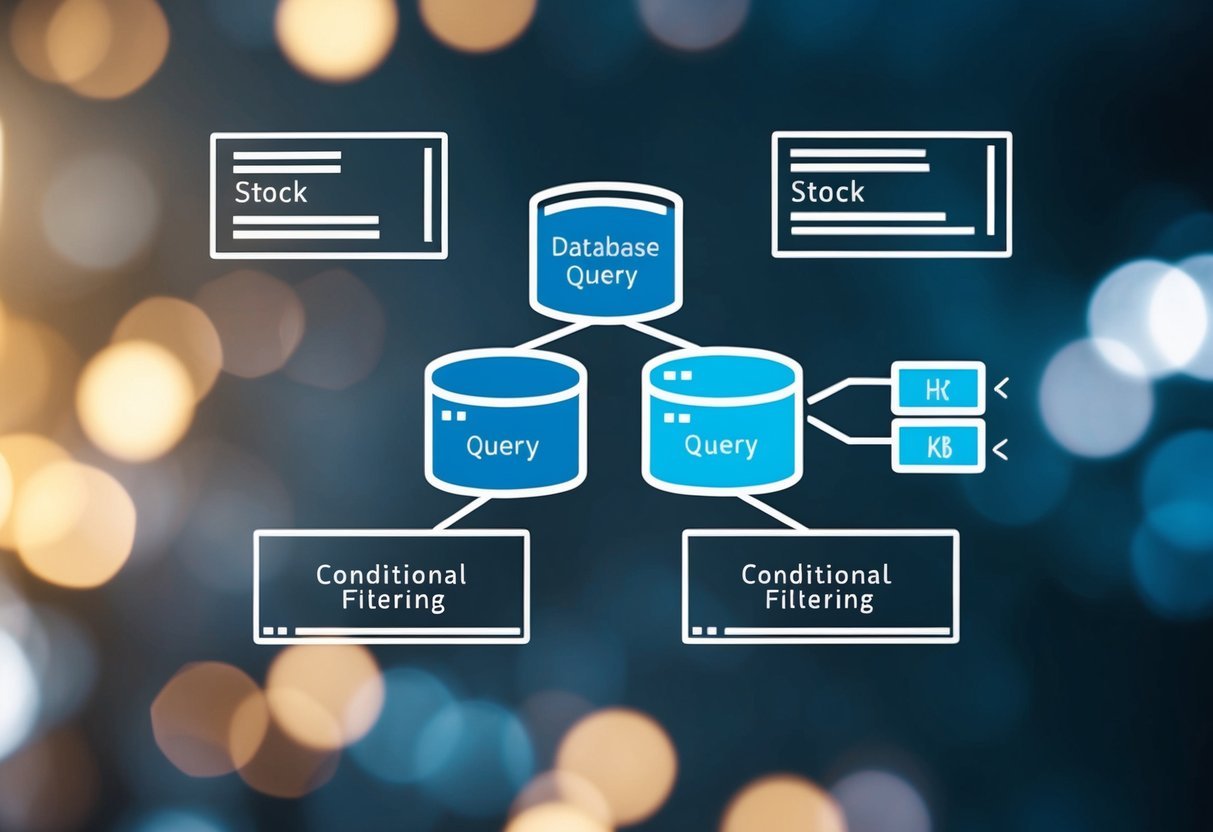
Correlated subqueries play a crucial role in SQL for retrieving detailed data by processing each row individually.
These subqueries integrate seamlessly with various SQL clauses, impacting performance and efficiency.
Defining Correlated Subqueries
Correlated subqueries differ from conventional subqueries. They reference columns from the outer query, making them dependent on each row processed.
Such subqueries allow SQL to return precise datasets by matching conditions dynamically.
Commonly, these appear in the WHERE clause, enhancing the ability to filter results in SQL Server.
Correlated subqueries execute a query tied to the outer query’s current row. This execution relies on the values checked against the database at the time of the query.
Thus, they can be essential for tasks requiring detailed, row-specific data selections.
Performance Impact of Correlated Subqueries
While powerful, correlated subqueries can influence query performance.
Since they execute for each row processed by the outer query, they can lead to slower performance with large datasets. This occurs because SQL often runs these subqueries as nested loop joins, handling them individually for each row.
Using a correlated subquery efficiently requires careful consideration of data size and processing requirements.
Optimizing the outer query and choosing the correct clauses, like the FROM or WHERE clause, can mitigate these impacts.
For demanding processing, exploring alternatives or indexes might be useful to reduce load times and improve response efficiency.
Exploring Advanced Use Cases
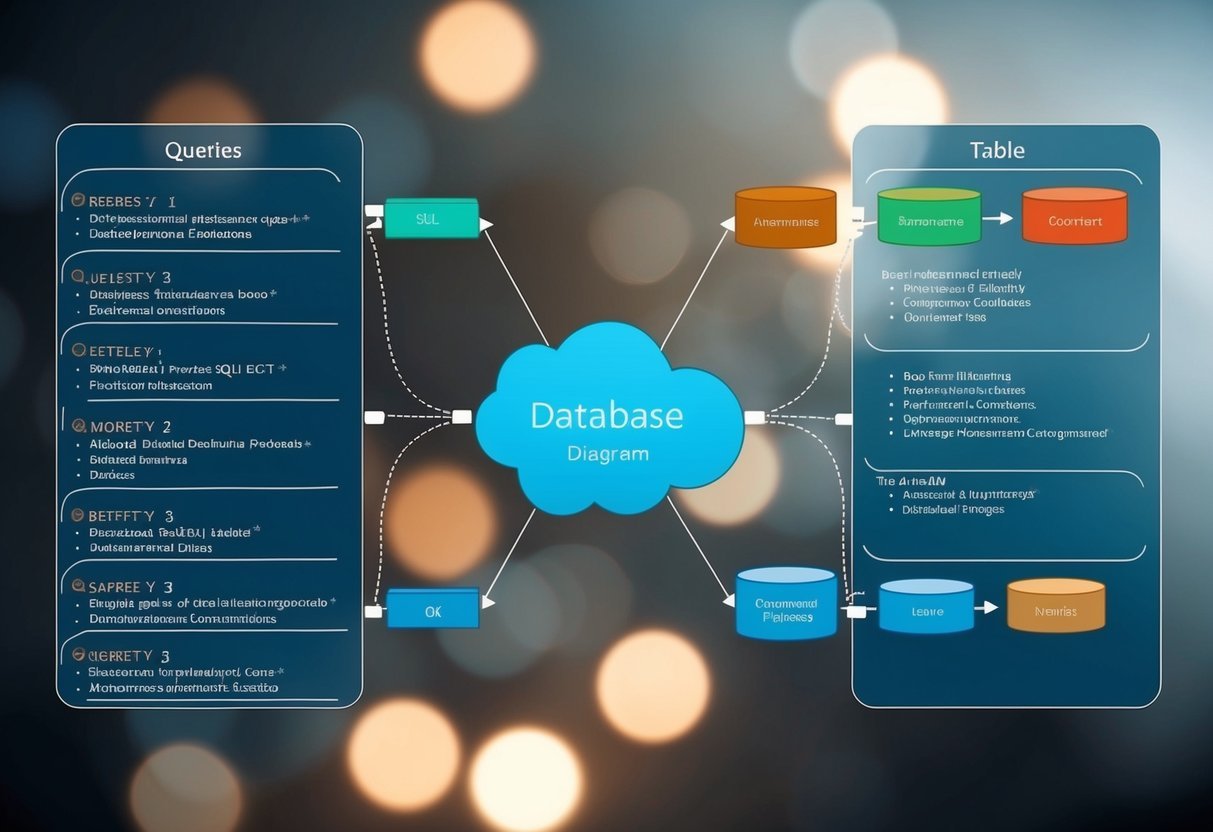
SQL’s advanced filtering techniques, like EXISTS and NOT EXISTS, provide powerful ways to refine data queries. They help to handle complex filtering tasks by checking the presence or absence of records in subqueries.
These techniques are crucial when filtering based on conditions tied to related data in a user-friendly manner.
Filtering with Product Attributes
When dealing with product databases, filtering with attributes such as product_id or product_name is common.
The EXISTS operator can be used to determine if a product with specific attributes is available in another table.
For instance, querying if a product_id is linked to any orders, uses EXISTS in a subquery that checks the orders table for the presence of the same product_id. This ensures only products with existing sales appear in results.
Using NOT EXISTS, you can filter products that do not meet certain attribute conditions.
For example, filtering to find products that have never been sold involves checking for product_id values absent in the orders table. This technique helps businesses identify which items fail to convert to sales, aiding inventory management.
Scenario-Based Filtering Examples
In scenarios where inventory needs to be synchronized with sales data, EXISTS becomes a useful tool.
By filtering based on whether inventory items exist in sales records, analysts can spot discrepancies.
For instance, creating a query to list inventory items sold and ensuring that product_id matches between tables provides accurate sales insights.
NOT EXISTS is similarly valuable in filtering scenarios, such as finding products lacking a specific feature.
An example includes checking for product_name not listed in a promotions table, which informs marketing who can target these products for future deals.
Such precise filtering helps companies to refine their inventory and sales approach significantly.
For detailed tutorials on using the EXISTS operator, DataCamp offers useful resources on how to use SQL EXISTS.
SQL Server-Specific Filtering Features
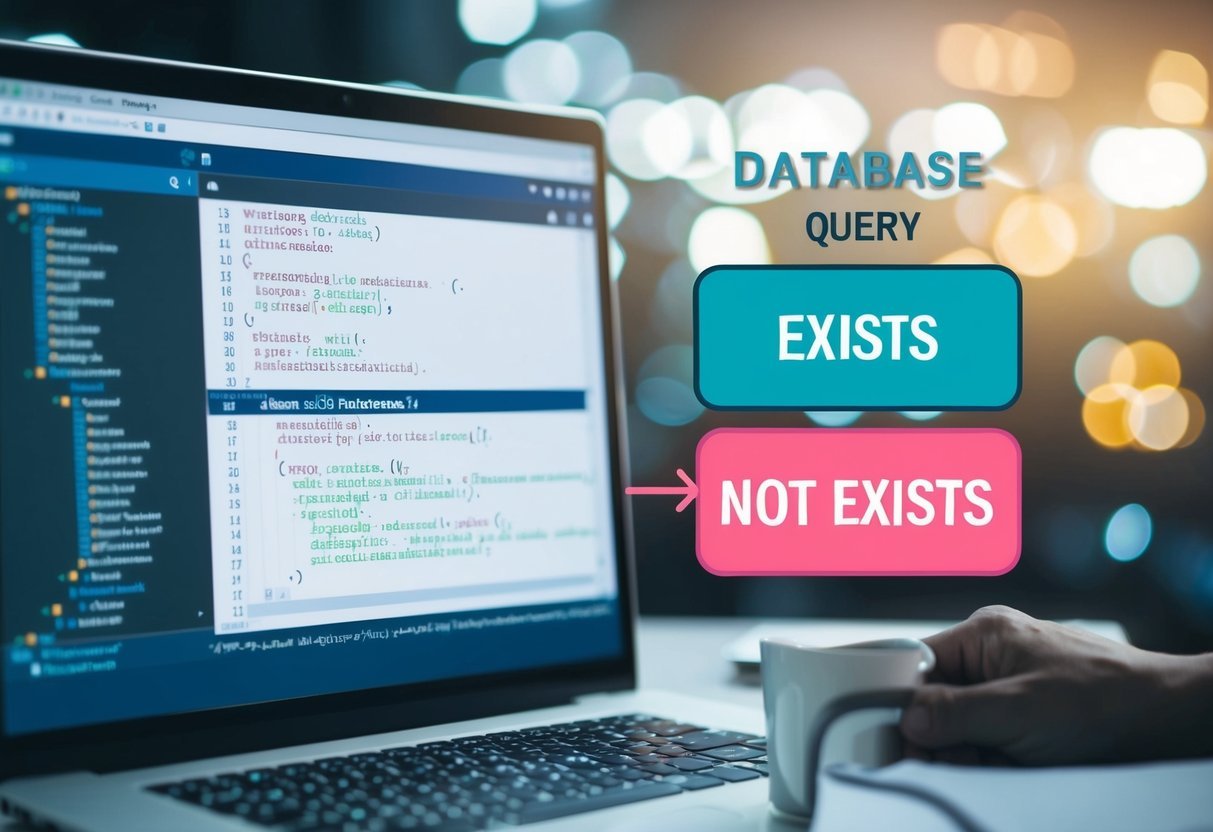
In SQL Server, various advanced filtering functions are available to help manage and manipulate data efficiently. The EXISTS and NOT EXISTS operators are crucial in forming complex queries by filtering rows based on specified criteria.
Exclusive SQL Server Functions
SQL Server offers unique functions that enhance data filtering.
The EXISTS operator checks the presence of rows returned by a subquery. If the subquery finds records, EXISTS returns true, allowing retrieval of specific datasets.
Conversely, the NOT EXISTS operator is handy for excluding rows. It returns true if the subquery yields no rows, making it ideal for filtering out non-matching data.
This operator is particularly useful for larger tables and when handling NULL values since it avoids complications that may arise with other filtering techniques.
These operators play a critical role in improving query performance.
They simplify data management, making them essential tools in SQL Server operations.
By understanding and utilizing these advanced functions, users can effectively manage and analyze complex data sets with precision.
Frequently Asked Questions

Understanding SQL filtering with EXISTS and NOT EXISTS involves comparing their use with other techniques like IN and JOIN. The performance and syntax differences can significantly impact query efficiency.
Can you compare the performance implications of using IN vs. EXISTS in SQL queries?
When deciding between IN and EXISTS, performance can vary.
Generally, EXISTS can be more efficient when dealing with subqueries that return larger datasets, as it stops processing once a match is found. IN might perform better with smaller datasets but can slow down with larger ones.
What are the practical differences between EXISTS and NOT EXISTS in SQL?
EXISTS checks for the presence of rows returned by a subquery. If at least one row exists, it returns TRUE.
In contrast, NOT EXISTS returns TRUE only if the subquery produces no rows. This difference is crucial when filtering datasets based on whether related records exist.
How do I correctly use the EXISTS clause in SQL with an example?
To use EXISTS, you embed it within a SQL query.
For example, you can select customers from a list where each has placed at least one order:
SELECT CustomerName
FROM Customers
WHERE EXISTS (
SELECT 1
FROM Orders
WHERE Customers.CustomerID = Orders.CustomerID
);
In what scenarios should NOT EXISTS be used instead of a JOIN in SQL?
NOT EXISTS is preferable to JOIN when checking for records’ absence in a related table.
Use it when you need to find rows in one table that do not have corresponding entries in another. This approach can be more efficient than a LEFT JOIN followed by a NULL check.
How can one check for the absence of records in a SQL database using NOT EXISTS?
To verify a record’s absence, NOT EXISTS can be utilized.
For example, to find employees without orders:
SELECT EmployeeName
FROM Employees
WHERE NOT EXISTS (
SELECT 1
FROM Orders
WHERE Employees.EmployeeID = Orders.EmployeeID
);
```Sure, I can help with that! Could you please provide the text that you would like me to edit?
### What are the syntax differences between IF EXISTS and IF NOT EXISTS in SQL?
The IF EXISTS syntax is used when dropping objects like tables or indexes to ensure they are present.
Conversely, IF NOT EXISTS is used when creating objects only if they do not already exist.
These commands help avoid errors in SQL executions when altering database objects.

